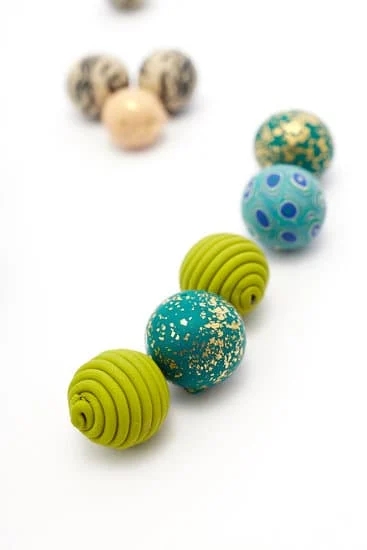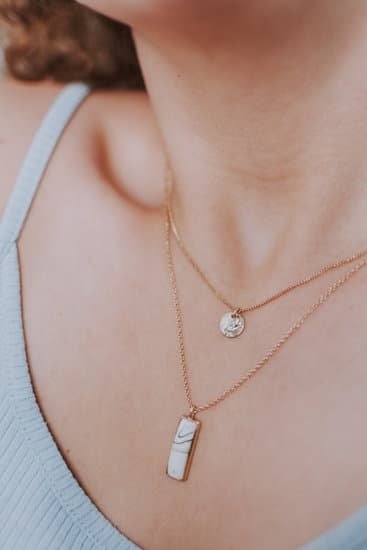The history of body jewelry dates back centuries, with its origins rooted in ancient civilizations around the world. In modern society, body jewelry has gained immense popularity as a way for individuals to express themselves and enhance their personal style. This article delves into the rich historical background of body jewelry, uncovering its fascinating origins and tracing its evolution through time.
From ancient cultures to contemporary fashion subcultures, body jewelry has held a significant place in human adornment. By exploring the historical roots of body jewelry, we gain insight into the symbolism, significance, and cultural traditions associated with different forms of body adornment.
Beginning with the earliest traces of body adornments from ancient civilizations, we unravel the mysteries behind their use and delve into the intricate craftsmanship that was employed. Throughout this journey, we will uncover iconic pieces from various cultures such as lotus flower earrings in ancient Egypt and nose rings in India.
As we navigate through history, we will also examine how body jewelry evolved in times of conservatism and religious influence, such as during medieval Europe. Furthermore, we will explore the revival of body jewelry in recent decades, discussing its manifestations in alternative fashion subcultures.
Ultimately, this article celebrates the vibrant tapestry of body jewelry throughout time – a testament to human creativity and individuality. It is an expression of personal style intertwined with cultural diversity. So join us on this informative journey as we unravel the origins and evolution of body jewelry – an art form that transcends time and captivates our fascination.
Ancient Origins
Body jewelry has become increasingly popular in modern society, with people from all walks of life adorning their bodies with various types of jewelry. But have you ever wondered about the origins of this fascinating art form? In this section, we will delve into the ancient civilizations that pioneered body jewelry and explore the significance and symbolism behind their adornments.
In ancient times, body adornment was not merely a fashion statement, but a reflection of cultural beliefs, social status, and spirituality. The earliest traces of body jewelry can be found in civilizations such as Ancient Egypt, Mesopotamia, and India. These cultures used a variety of materials like gold, silver, bone, and shells to create intricate pieces that were worn on different parts of the body.
In Ancient Egypt, body piercings played a prominent role in their culture. Both men and women adorned themselves with earrings, nose rings, septum rings, and lip piercings. Earrings were particularly significant as they symbolized wealth and social status. The iconic lotus flower earrings were highly revered as symbols of purity and rebirth. Septum rings were also common among both genders and represented fertility.
Unveiling the early traces of body adornments allows us to gain insight into ancient civilizations’ values and beliefs. As we explore further back in time by examining cultures such as those in Mesopotamia or India, we discover more about the evolution of body jewelry throughout history.
In Mesopotamia, which encompassed regions like Sumeria and Babylon, body jewelry evolved with intricate designs and skilled craftsmanship. They favored materials such as gold for its rarity and lapis lazuli for its vibrant blue color. Bracelets in particular held great cultural significance; they were worn not only for aesthetic purposes but also as protective amulets. Anklets were also popular among women and were believed to enhance fertility.
As we embark on this journey into the ancient origins of body jewelry, we begin to appreciate the depth and diversity of human culture throughout history. From Egypt’s elegance to Mesopotamia’s mastery, each civilization left its mark on the art of body adornment. Whether for religious purposes, social status, or personal expression, these early civilizations embraced body jewelry as an integral part of their identity.
Egyptian Elegance
Ancient Egypt is widely recognized as the birthplace of body piercing, with evidence dating back over 5,000 years. In Egyptian culture, body piercings held deep significance and were worn by people from all social classes. They believed that adorning their bodies with jewelry would not only enhance their physical beauty but also protect them from evil spirits.
One of the most iconic pieces of body jewelry in ancient Egypt was the lotus flower earrings. These earrings were commonly worn by both men and women and symbolized rebirth and divine beauty. The lotus flower itself was seen as a powerful symbol of creation and purity in Egyptian mythology.
Another popular form of body piercing among ancient Egyptians was the septum ring. These rings were often made out of gold or silver and were worn by both men and women to accentuate their facial features.
Egyptian society placed great importance on personal adornment, and body piercings were integral to their cultural identity. Apart from lotus flower earrings and septum rings, other types of body jewelry such as lip plugs, ear cuffs, and bracelets were also widely worn during this time. These intricate pieces demonstrated the skillful craftsmanship of ancient Egyptian jewelers.
| Popular Body Jewelry Styles | Symbolism |
|---|---|
| Lotus Flower Earrings | Rebirth, divine beauty |
| Septum Rings | Facial accentuation |
| Lip Plugs | Social status indicator |
The practice of body piercing in ancient Egypt went beyond mere fashion. It was deeply intertwined with spirituality and religious rituals. The Egyptians believed that specific body piercings had the power to connect them with higher realms, allowing them to communicate with gods and goddesses. This is why they often adorned themselves with jewelry made from precious metals and gemstones, which were thought to have mystical properties.
As we journey into the fascinating history of body jewelry, the ancient Egyptian culture stands out as a testament to the enduring allure and significance of adorning our bodies. Their elegant and symbolic jewelry continues to inspire modern designs and remains a cherished part of the global body piercing tradition.
Mesopotamian Mastery
Mesopotamia, an ancient region located in present-day Iraq, played a pivotal role in the development of body jewelry. This section delves into the evolution of body adornments in this rich and vibrant civilization, highlighting the materials, techniques, and designs favored during this era.
The Earliest Evidence of Mesopotamian Body Jewelry
The earliest traces of body jewelry in Mesopotamia can be dated back to around 2500 BCE during the Sumerian period. The Sumerians were known for their intricate craftsmanship and their use of precious metals like gold and silver. They believed that wearing jewelry not only enhanced one’s beauty but also provided protection against evil spirits.
Some common forms of body jewelry worn by the Sumerians included necklaces, earrings, bracelets, and anklets. These pieces were often adorned with gemstones such as lapis lazuli, carnelian, and agate. The Sumerians valued both personal adornment and displays of wealth, making body jewelry an essential aspect of everyday life.
Babylonian Brilliance: Advancements in Design and Technique
Following the decline of the Sumerians, the Babylonians emerged as a dominant force in Mesopotamia. They built upon the foundation laid by their predecessors and further advanced the art of body jewelry. Babylonian craftsmen developed new techniques such as granulation (the fusing of tiny gold beads) and filigree (intricate metalwork using fine wires), which allowed for more elaborate designs.
One example of Babylonian brilliance in body jewelry is the use of diadems – ornamental headpieces worn by both men and women. These diadems were often made from gold or silver and decorated with intricate patterns or symbols representing deities or divine protection. Additionally, ornate rings and armbands were popular among the Babylonians, reflecting their love for opulence and luxury.
The mastery of body jewelry in Mesopotamia showcases the ingenuity and artistic prowess of these ancient civilizations. From the Sumerians’ emphasis on personal adornment to the Babylonians’ advancements in technique and design, Mesopotamian body jewelry served as a testament to their cultural sophistication and enduring legacy.
Indian Opulence
India is a country known for its opulence and rich cultural heritage, and this extends to its tradition of body jewelry. In this section, we will shed light on the vibrant world of traditional Indian body adornments. From nose rings to anklets, these jewelry styles are deeply rooted in history and hold significant cultural symbolism.
The Significance of Nose Rings
One of the most iconic forms of body jewelry in India is the nose ring, also known as nath or mukhuttis. Nose rings have played a significant role in Indian tradition for centuries and are still popular today. They come in various shapes, sizes, and designs, each carrying its own symbolic meaning. In certain regions, such as Rajasthan and Punjab, women wear large nose rings that often feature intricate filigree work or gemstone embellishments.
Nose rings not only add beauty but also hold cultural significance. They are believed to enhance a woman’s beauty and represent her marital status. In some communities, the size of the nose ring indicates a woman’s wealth and social status. Additionally, nose rings are considered auspicious and are worn during religious ceremonies and festivals as a sign of devotion.
Anklets: Music for the Feet
Another key component of traditional Indian body jewelry is anklets or payals. Anklets are typically worn around the ankles and produce melodious sounds when walking or dancing-a heavenly music for the feet. They are made from various materials like silver, gold-plated silver (known as kundan), beads, bells, or even shells.
The significance of anklets in Indian culture goes beyond their musical charm. These adornments hold both aesthetic and spiritual value. In some traditions, anklets are associated with fertility; hence they are worn by married women to symbolize prosperity and abundance within their family life. For unmarried girls, anklets signify youthfulness and gracefulness.
Tribal Treasures
Body jewelry has long been an integral part of various indigenous tribes, serving not only as a form of personal adornment but also as a reflection of cultural identity and traditions. In this section, we will explore the importance of body jewelry in different tribal communities and how customs and rituals have shaped their unique jewelry traditions.
In many tribal cultures, body adornments hold deep spiritual and symbolic meaning. They are often worn to mark significant rites of passage such as coming of age ceremonies, weddings, or initiations into secret societies. For example, among the Maasai people of East Africa, beaded necklaces and earrings are worn by both men and women as a symbol of wealth and beauty. Each piece is meticulously crafted and carries specific color combinations that represent social status and age.
One particularly fascinating aspect of tribal body jewelry is its connection to nature and spirituality. Many tribes believe that certain materials or symbols possess protective or healing properties. For instance, the Native American tribes of the Great Plains are known for their use of feathers in headdresses, which represent bravery, wisdom, or freedom in their respective cultures. Similarly, various indigenous tribes in South America incorporate shells into their body adornments as a symbol of fertility and abundance.
| Tribal Group | Body Jewelry Style | Symbolic Meaning |
|---|---|---|
| Kayan Lahwi women (Myanmar) | Giraffe-like brass neck coils | Symbolize beauty and social status; believed to protect against evil spirits |
| Himba tribe (Namibia) | Woven copper and shell anklets | Represent marriage and fertility; offer protection to the wearer |
| Huli people (Papua New Guinea) | Fiber headdresses adorned with bird-of-paradise feathers | Signify manhood and social rank; believed to bring good fortune |
From Central Asia to the Pacific Islands, tribal body jewelry is a testament to the cultural richness and diversity of our world. By understanding and appreciating the customs, symbolism, and artistry behind these adornments, we can celebrate the vibrant tapestry of body jewelry throughout history.
However, it is important to approach this appreciation with respect and sensitivity, recognizing the potential for cultural appropriation. By honoring the origins and traditions of each style, we can ensure that body jewelry continues to be embraced as a celebration of personal expression and cultural heritage.
Renaissance Revival
The Renaissance Revival: Body Jewelry in the European Middle Ages
During the European Middle Ages, a period marked by conservatism and religious authoritarianism, body jewelry still managed to find its place within society. This section will explore the presence and significance of body jewelry during this era, shedding light on its role in both religious iconography and social status.
In medieval Europe, body jewelry took on a distinctly spiritual meaning. For instance, rosary beads were worn as a form of devotional practice among Catholics. These beads served as a visual reminder for individuals to engage in prayer and meditation. Similarly, crucifixes and cross pendants were worn as symbols of faith and devotion.
Beyond their spiritual connotations, body jewelry also played a role in signifying social status during the Middle Ages. Wealthier individuals adorned themselves with intricate gold necklaces, rings, and bracelets embellished with gemstones. Such pieces were not only aesthetic displays of wealth but also served as tangible investments that could be passed down through generations.
To further exemplify the importance of body jewelry in this era, it is essential to examine the use of jewelry in religious iconography. Elaborate crowns encrusted with precious gemstones adorned kings and queens, symbolizing their divine right to rule. Similarly, bishops wore ostentatious versions of mitres embellished with jewels to signify their elevated status within the Church hierarchy.
Overall, despite the conservative nature of medieval Europe, body jewelry managed to maintain its presence through both spiritual devotion and social prestige. The use of jewelry as symbols of faith or indicators of wealth reveal how deeply ingrained these adornments were within the fabric of society during this time period.
Examples
1. Rosary beads: Worn by Catholics as a tool for counting prayers and engaging in meditation.
2. Crucifixes: Pendants or brooches depicting Jesus on the cross that served as symbols of devotion and faith.
3. Gemstone jewelry: Worn by the wealthy as a display of social status and economic prosperity.
4. Crowns: Elaborate headpieces adorned with gemstones, worn by kings and queens to symbolize their divine right to rule.
5. Bishop’s mitres: Intricately designed headdresses embellished with jewels, indicating the high-ranking position of bishops within the Church hierarchy.
The use of body jewelry during the European Middle Ages serves as a testament to its enduring appeal and cultural significance throughout history.
Modern Manifestation
In the 20th and 21st centuries, body jewelry experienced a remarkable resurgence, reclaiming its place as a prominent form of self-expression. This revival can be attributed to various factors, including changes in societal attitudes towards body modification, advancements in piercing techniques and equipment, and the influence of alternative fashion subcultures.
During the 1960s counterculture movement, body jewelry saw a marked increase in popularity. Hippies and free spirits embraced piercings and adorned themselves with unconventional jewelry as a rebellious statement against mainstream norms. Nose rings, belly button rings, and septum piercings became symbols of nonconformity and personal freedom.
The late 20th century witnessed the emergence of piercing studios and tattoo parlors that specialized in body modifications. These dedicated spaces provided safe and hygienic environments for individuals to explore their desire for self-expression through body piercings. Professional piercers trained in proper techniques using sterile equipment, ensuring the safety of their clients.
As we move into the 21st century, body jewelry has become deeply intertwined with alternative fashion subcultures such as punk, goth, and body modification enthusiasts. In these communities, creativity knows no bounds when it comes to adorning one’s body with unique jewelry pieces. From intricate ear cuffs to dermal implants and tongue studs with vibrant gemstones, the range of options is expansive.
However, it is important to note that this new wave of popularity for body jewelry has also sparked debates around cultural appropriation versus appreciation. As people from different cultures adopt specific styles of body adornment without understanding or respecting their historical significance or cultural context, concerns about commodification arise. It is crucial for individuals to educate themselves about the origins of various styles before wearing them so they can appreciate them without disrespecting their legacy.
The modern manifestation of body jewelry is a testament to its enduring allure as a form of personal expression. Whether it’s embracing traditional piercings or pushing the boundaries with avant-garde designs, individuals have embraced body jewelry as a means of reclaiming their bodies and celebrating their unique identities. Through the lens of history, we can appreciate just how far body jewelry has come and how it continues to evolve in tandem with our ever-changing cultural landscape.
Cultural Appropriation vs. Appreciation
As body jewelry continues to gain popularity in modern society, it is crucial to discuss the complex issue of cultural appropriation versus appreciation when it comes to its adoption from different cultures. While body jewelry has a rich history rooted in various civilizations and traditions, it is important to respect and acknowledge the historical and cultural context behind each style.
Cultural appropriation occurs when elements of one culture are borrowed or used by another culture without understanding or respecting their significance. When it comes to body jewelry, it is essential to recognize that these adornments often hold deep meanings within the cultures they originate from. For example, nose rings have been worn for centuries in India as a symbol of marriage and female empowerment, while septum rings have played a significant role in ancient Egyptian religious rituals.
On the other hand, cultural appreciation involves understanding and honoring the historical and cultural significance of different styles of body jewelry. It entails educating oneself about the origins, symbolism, and traditions associated with these adornments. By appreciating the value and meaning behind each style, individuals can ethically incorporate them into their personal fashion choices without appropriating or disrespecting the cultures they come from.
To navigate this ethical terrain surrounding body jewelry, it is important to approach its adoption with sensitivity and respect. Engaging in meaningful conversations about cultural appropriation versus appreciation can help individuals make informed decisions when choosing to wear certain types of body jewelry. By valuing diversity, acknowledging historical contexts, and celebrating different cultures’ contributions to the artistry of body adornments, we can create a more inclusive environment where personal expression coexists with cultural integrity.
Conclusion
In conclusion, the history of body jewelry is a fascinating journey that unveils the rich tapestry of human adornment through time. From ancient civilizations that pioneered body jewelry to the modern manifestation in the 20th and 21st centuries, it is evident that body jewelry has always held a significant place in human culture.
Throughout history, body jewelry has served multiple purposes beyond mere aesthetics. It has been imbued with symbolism, representing social status, religious devotion, and personal identity. From the lotus flower earrings of ancient Egypt to the nose rings of India, each style holds deep cultural significance and tells a unique story.
However, it is important to navigate the ethics of body jewelry by appreciating rather than appropriating different styles from various cultures. Respecting the historical context and understanding the cultural significance behind each piece is crucial in celebrating its diversity without disrespecting its origins.
In today’s society, body jewelry continues to be not only a form of personal expression but also a celebration of cultural heritage. Whether it is through piercing studios, tattoo parlors, or alternative fashion subcultures, body jewelry maintains its enduring allure as individuals use it to carve out their own unique identities.
In conclusion, exploring the vibrant history of body jewelry allows us to celebrate the beauty and diversity of human culture throughout time. As we continue to embrace this art form in our modern society, let us do so with reverence for its origins and an appreciation for its ability to empower individuals in expressing themselves authentically.

Welcome to my jewelry blog! My name is Sarah and I am the owner of this blog.
I love making jewelry and sharing my creations with others.
So whether you’re someone who loves wearing jewelry yourself or simply enjoys learning about it, be sure to check out my blog for insightful posts on everything related to this exciting topic!





